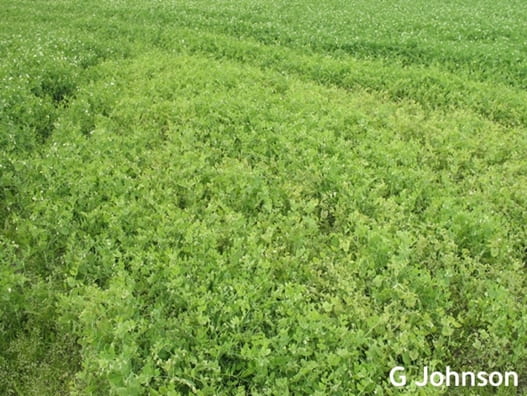Gordon Johnson, Extension Vegetable & Fruit Specialist; gcjohn@udel.edu
Pea harvest is nearing and we are seeing yellowing and poor growth in many pea fields due to wet conditions. Peas do not perform well in soils that are worked when they are too wet or when they receive heavy rainfall after planting. Compaction and crusting over will lead to poor emergence and reduced growth. This is evident in many Delmarva pea fields in 2019.
Recently, heavy rains have caused some pea fields or parts of fields to turn yellow, particularly were there was compacted soil or poor drainage. Peas are effective at fixing nitrogen; however, we normally apply 40-80 lbs/a of fertilizer nitrogen (N) prior to planting thus reducing N fixation contributions from Rhizobium nodules on the roots. With the frequent rainfall, some fields have remained saturated and denitrification has occurred, reducing available N from the initial fertilizer application. In addition, root function and Rhizobium nodulation is further impaired in saturated soils, thus limiting any potential N fixation contributions.
In pea fields that have had a past history of root rot, we have the potential to see problems in 2019. According to the Crop Profile for Peas in Delaware: “Aphanomyces root rot, or common root rot, is one of the most destructive diseases of peas. It occurs in most pea producing regions of the U.S., including the Mid-Atlantic. In the Northeast, average annual yield loss to this disease is about 10%, though losses in individual fields may be up to 100%. Wet soil conditions and poor drainage are associated with higher rates of infection. The disease is most damaging in years when a cool, wet spring is followed by an early, warm summer with low rainfall.”

Good pea growth and development.

Yellowing in peas in wet soils
